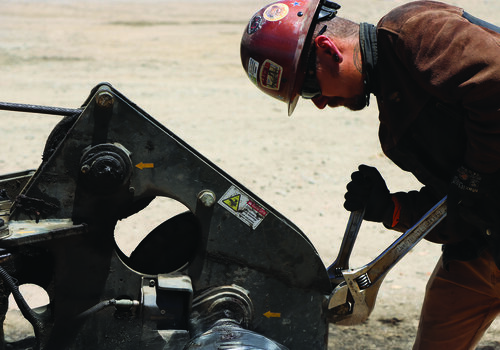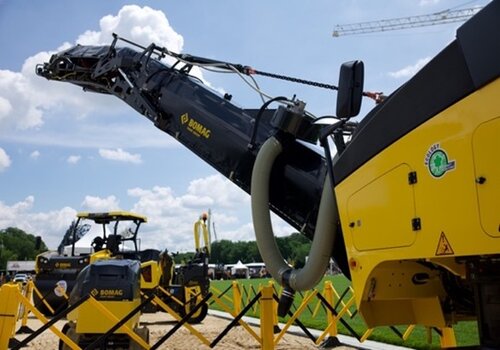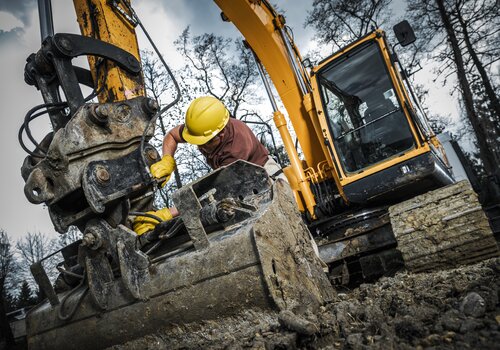Tower cranes are indispensable in modern construction, enabling the efficient and safe lifting of heavy materials and equipment in large projects across the country. However, their successful implementation requires meticulous planning and preparation.
When things go wrong, workers and people around cranes can suffer injuries or even death as a result. Recent examples include a 2023 crane fire in Hell’s Kitchen, NYC, that caused multiple injuries, including to responding firefighters and people walking on the street. Also last year, 20 lost their lives when a crane collapsed in India at the site of a bridge building site.
Construction contractors must ensure jobsites are ready for tower crane success. This guide will help contractors prepare sites for tower crane operations, ensuring projects proceed safely and efficiently.
SITE ASSESSMENT AND PLANNING
The first step in preparing for a tower crane is a comprehensive site assessment. This involves evaluating the physical constraints, such as the size and shape of the site, proximity to other buildings and ground conditions. Conducting a thorough geotechnical survey is crucial to understand the soil’s bearing capacity and ensure it can support the crane’s base.
Zoning and Permits: It's essential to understand local zoning laws and obtain the necessary permits before crane installation. Each municipality may have specific requirements regarding crane use, including height restrictions and operational hours.
Logistics and Accessibility: Planning for the delivery and assembly of the tower crane is another critical aspect. Ensure that the site is accessible for the large vehicles required to transport crane components. Arrange for road closures if necessary and coordinate with local authorities to minimize disruption.
SELECTING THE RIGHT CRANE
Choosing the appropriate tower crane for your project is vital. Consider the following factors:
Lifting Capacity and Radius: Ensure the crane has the required lifting capacity and reach for your project. Evaluate the maximum load and the distance the crane needs to cover.
Height Requirements: Determine the maximum height the crane must reach, considering the building’s design and any potential obstructions.
Type of Crane: Decide between a hammerhead, luffing jib or self-erecting crane based on your specific needs. Luffing jib cranes are ideal for congested sites, while self-erecting cranes are suitable for smaller projects with shorter durations.
FOUNDATION AND ERECTION
The foundation of a tower crane is critical for stability and safety. Typically, this involves constructing a concrete pad that meets the crane manufacturer's specifications. The foundation must be designed to handle the crane’s loads and the forces exerted during operation.
Assembly: Tower crane assembly is a complex process that should only be undertaken by experienced professionals. It often involves mobile cranes to erect the mast and jib sections. Ensure all components are inspected for damage and properly secured.
SAFETY CONSIDERATIONS
Safety is paramount when operating a tower crane. Implementing rigorous safety protocols can prevent accidents and ensure smooth operations.
Training and Certification: All crane operators should be certified and undergo regular training. This includes understanding the crane’s controls, emergency procedures and load handling techniques.
Regular Inspections: Conduct daily inspections of the crane to check for any signs of wear or damage. Periodic maintenance should also be scheduled according to the manufacturer’s recommendations.
Weather Monitoring: Tower cranes are sensitive to weather conditions, particularly high winds. Implement a wind monitoring system and establish protocols for shutting down operations during adverse weather.
COMMUNICATION AND COORDINATION
Effective communication is essential for coordinating crane operations with other site activities. Use radios or other communication devices to maintain constant contact between the crane operator, signal person, and ground crew.
Site Layout Planning: Develop a detailed site layout plan that includes the crane’s location, swing radius and potential impact on other site activities. This helps in avoiding conflicts and ensuring smooth workflow.
Scheduling: Plan the crane’s operations to align with the project schedule. Ensure that materials are ready for lifting when needed and that other site activities do not interfere with crane operations.
TECHNOLOGY AND SAFETY
Technology is leading the way to enhance the safety and efficiency of tower crane operations.
Data: Implementing Building Information Modeling (BIM) can help in planning crane operations and identifying potential issues before they arise. Real-time data from cameras and drones can simulate crane movements and optimize the placement and operation, preventing accidents and increasing efficiency.
Automation: Emerging technology solutions can conduct preventative maintenance checks, even finding and fixing problems before they occur.
Remote Operators: Using cameras and screens, the remote operation of cranes allow operators to work from the safety of the ground. Having a wider and safer view of a jobsite creates safer conditions for everyone.
5 Tower Crane Tips
- Conduct Thorough Site Assessments: Ensure the ground conditions are suitable for crane installation.
- Obtain Necessary Permits: Check local zoning laws and secure the required permits.
- Select the Right Crane: Consider lifting capacity, height requirements and site constraints.
- Prioritize Safety: Implement strict safety protocols and ensure all operators are certified.
- Utilize Technology: Use BIM and other technologies to optimize crane operations.
Photo credit: BANNAFARSAI/BIGSTOCKPHOTO.COM












